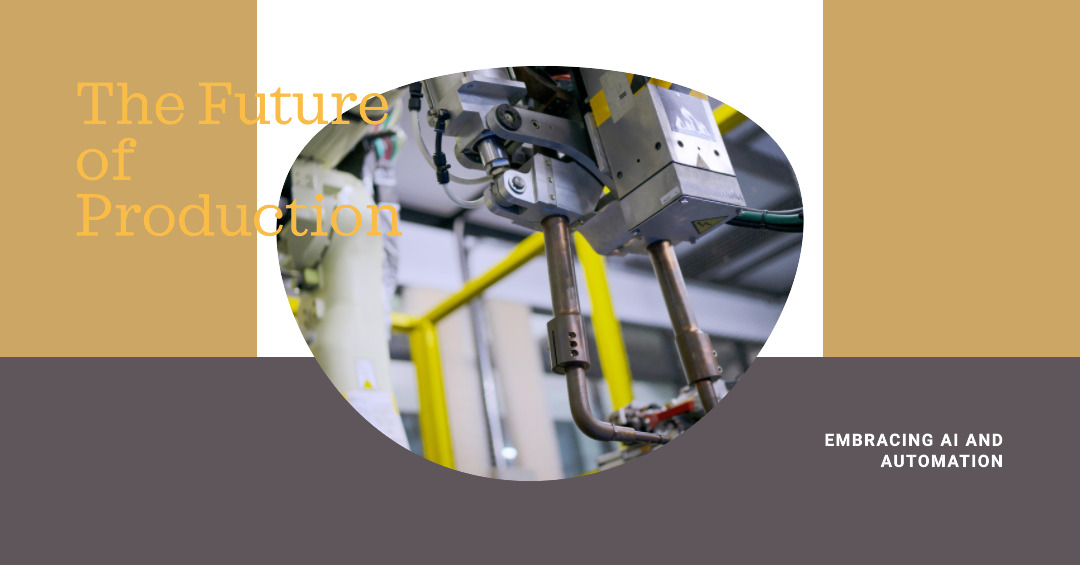Modern Automation of Production Using AI
The rapid advancements in technology have revolutionized various industries, and one area that has seen significant transformation is the production sector. With the advent of Artificial Intelligence (AI), modern automation has taken center stage, leading to increased efficiency, accuracy, and productivity. In this article, we will explore how AI is transforming production processes and revolutionizing the manufacturing industry.
Understanding AI and Automation
Before delving deeper into the modern automation of production using AI, it is essential to understand what AI and automation entail.
Artificial Intelligence (AI): AI refers to the development of intelligent machines that are capable of performing tasks that typically require human intelligence. These machines can analyze, learn, and make decisions based on data inputs, mimicking cognitive functions.
Automation: Automation involves the use of technology to perform tasks with minimal human intervention. It aims to streamline processes, reduce errors, and enhance productivity.
AI-Powered Robotics
One of the most prominent applications of AI in production is the integration of AI-powered robotics. These robots possess the ability to perceive their environment, make decisions, and execute tasks with precision. With advanced sensors and machine learning capabilities, AI-powered robots can adapt to changing conditions and perform intricate tasks that were once reserved for human workers.
The benefits of AI-powered robotics in production are manifold. They can enhance production speed and efficiency, reduce errors, optimize resource utilization, and improve workplace safety. Moreover, these robots can work 24⁄7 without fatigue, leading to increased productivity and reduced operational costs.
Predictive Maintenance and Quality Control
AI plays a crucial role in predictive maintenance and quality control processes, ensuring smooth production workflows and minimizing downtime. By analyzing historical and real-time data, AI algorithms can predict potential equipment failures, enabling proactive maintenance measures. This predictive approach helps prevent unexpected breakdowns, reduces repair costs, and increases overall equipment efficiency.
Furthermore, AI-powered quality control systems can identify and rectify defects in real-time. These systems use machine learning algorithms to analyze product variations, detect anomalies, and make adjustments on the fly. The integration of AI in quality control improves product consistency, reduces waste, and ensures higher customer satisfaction.
Demand Forecasting and Inventory Management
Accurate demand forecasting and effective inventory management are critical for any production-based industry. AI algorithms excel in analyzing large volumes of data to identify patterns, predict demand, and optimize inventory levels accordingly. By considering various factors such as historical sales data, market trends, and external influences, AI-powered demand forecasting systems can provide accurate predictions, enabling manufacturers to optimize production planning and resource allocation.
Furthermore, AI-driven inventory management systems can monitor real-time inventory levels, automatically reorder supplies, and identify potential bottlenecks. This automation ensures that production processes run smoothly, minimizing stock-outs, reducing carrying costs, and enhancing overall supply chain efficiency.
Enhanced Worker Safety and Collaboration
AI not only empowers machines but also enhances worker safety and collaboration in the production environment. Collaborative robots, also known as cobots, are designed to work alongside human operators, assisting them in performing physically demanding or repetitive tasks. These cobots have built-in safety features such as sensors that detect human presence, significantly reducing the risk of accidents.
Moreover, AI-powered analytics systems can monitor worker behavior and identify potential safety hazards. By analyzing real-time data, these systems can alert workers and supervisors about unsafe practices or environmental conditions, enabling timely corrective actions. This proactive approach to worker safety minimizes accidents, reduces injuries, and creates a safer work environment.
The Future of AI in Production
As technology continues to advance, the future of AI in production looks promising. Some of the potential areas where AI can further revolutionize production processes include:
- Optimized Energy Consumption: AI algorithms can help optimize energy usage in production facilities, reducing costs and minimizing environmental impact.
- Customized Production: AI-powered systems can enable mass customization by efficiently adapting production processes to cater to individual customer needs.
- Real-time Process Optimization: AI can continuously analyze production data to identify bottlenecks, inefficiencies, and areas for improvement, leading to enhanced productivity and cost savings.
- Human-Machine Collaboration: The integration of AI and human intelligence can lead to new models of collaboration, where humans and machines work together seamlessly towards common goals.
In conclusion, the modern automation of production using AI has revolutionized the manufacturing industry. From AI-powered robotics to predictive maintenance, demand forecasting to enhanced worker safety, AI has proved to be a game-changer. By embracing AI technologies, manufacturers can achieve increased efficiency, accuracy, and productivity, ultimately driving growth and success in the competitive global market.
FAQ
1. What is Artificial Intelligence (AI)?
Artificial Intelligence (AI) refers to the development of intelligent machines that can perform tasks that typically require human intelligence. These machines can analyze, learn, and make decisions based on data inputs, mimicking cognitive functions.
2. What is automation?
Automation involves the use of technology to perform tasks with minimal human intervention. It aims to streamline processes, reduce errors, and enhance productivity.
3. How do AI-powered robots benefit production processes?
AI-powered robots enhance production speed and efficiency, reduce errors, optimize resource utilization, and improve workplace safety. They can adapt to changing conditions and perform intricate tasks, leading to increased productivity and reduced operational costs.
4. How does AI contribute to predictive maintenance and quality control?
AI algorithms analyze historical and real-time data to predict potential equipment failures, enabling proactive maintenance measures. This approach helps prevent unexpected breakdowns, reduces repair costs, and increases overall equipment efficiency. AI-powered quality control systems can identify and rectify defects in real-time, improving product quality.

